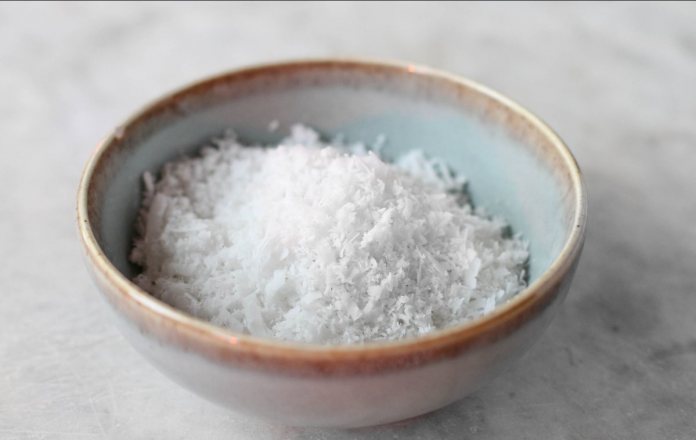Got coconuts? Make coconut flour with this simple recipe.
As the interest in grain-free diets continues to increase, many cooks are looking to find a replacement for all-purpose flour in their baking.
What is coconut flour?
Coconut flour is a gluten free “flour” that is essentially dried coconut in powdered form. It is made from the coconut solids that are left over after the meat been used to produce coconut milk. The solids are ground into a very fine, flour-like powder. The flour is popular for gluten free and low-carb baking, since it is low in carbohydrates and very high in fiber.
Health benefits of coconut flour:
It’s an excellent alternative to traditional wheat flour because it’s high in fiber (about 5 grams per tablespoon) and lowers the glycemic index (the measure of a food’s impact on blood sugar).In a nutshell, that means it helps you to feel fuller (and all that fiber helps to keep you regular), and the lower glycemic index means your blood sugar won’t spike as quickly as grain-based flours.
Those who are Paleo, gluten free or grain free often opt for coconut flour (along with nut flours) for baking and cooking. Keep in mind with baking you can’t use a 1:1 ratio to wheat flour. Generally, you will use about 1/4 of the amount and a lot of eggs as coconut flour is very dense and dry.
What does it taste like?
Coconut flour does have a coconut scent and will impart a coconut flavor to baked goods, especially baked goods that don’t include any other strongly flavored ingredients, such as spices or cocoa powder. This can be a bonus for coconut fans, but might be a negative for people who don’t particularly like the flavor of coconut.
How to make coconut flour at home?
Okay, so back to basics. Who’s ready to learn how to make this? It’s really easy. Like really, really easy.
First, you’ll need coconut pulp. You can get this from fresh coconuts or dried coconut flakes. First make coconut milk with this pulp and then use what’s leftover to make coconut flour, so there’s no waste – and you get milk out of it.
Ingredients:
- 2 cups coconut pulp leftover from making coconut milk
- Air-tight container
Instructions:
- Heat oven to 120°F (50°C).
- Line a baking sheet with parchment paper.
- Spread out coconut pulp on parchment paper and bake for 45 minutes or until the coconut pulp is dried (no moisture at all).
- Remove from oven and let cool for a few minutes.
- Blend coconut pulp in a Vitamix or food processor for 1-2 minutes until pulp becomes a fine powder.
- Store coconut flour in an air-tight container.
Coconut flour for baking:
Coconut flour is particularly absorbent, and a very small amount of flour will absorb a very large amount of liquid. It also tends to have a drying effect on baked goods, because it is so absorbent. The best way to counteract its drying effect is to use plenty of eggs when you’re baking. The protein in egg whites helps to provide structure to baked goods while the yolks provide moisture.
Foods baked with coconut flour can often have a gritty texture, so it’s best to sift the flour thoroughly before you bake with it. Additionally, it’s good practice to separate your eggs, beating the flour with egg yolks and then beating the whites separately until they hold stiff peaks. You can then fold the whites into the egg yolk and flour mixture, and this improves the natural heaviness of many baked goods that use coconut flour as an ingredient.
Top tips for coconut flour:
- Sift well before using.
- If making milk from coconuts, use leftover pulp to make coconut flour.
- Use a preheated oven.
- Store in an airtight container.



























